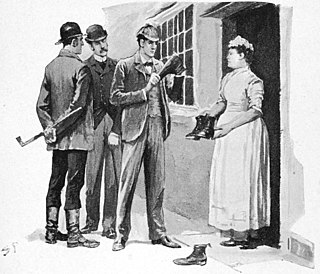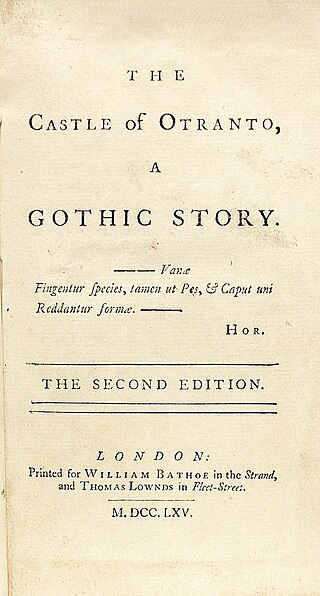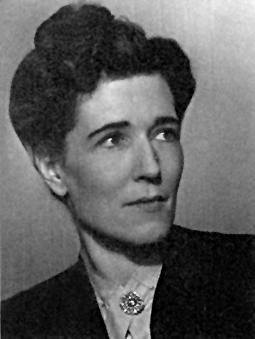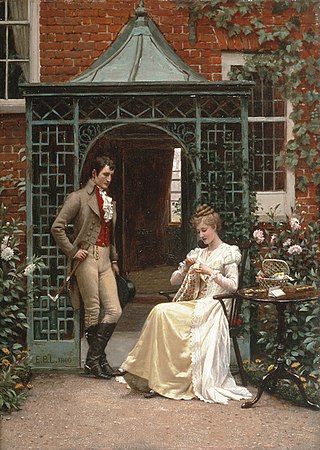
Detective fiction is a subgenre of crime fiction and mystery fiction in which an investigator or a detective—whether professional, amateur or retired—investigates a crime, often murder. The detective genre began around the same time as speculative fiction and other genre fiction in the mid-nineteenth century and has remained extremely popular, particularly in novels. Some of the most famous heroes of detective fiction include C. Auguste Dupin, Sherlock Holmes, Kogoro Akechi, and Hercule Poirot. Juvenile stories featuring The Hardy Boys, Nancy Drew, and The Boxcar Children have also remained in print for several decades.

Gothic fiction, sometimes called Gothic horror, is a loose literary aesthetic of fear and haunting. The name refers to Gothic architecture of the European Middle Ages, which was characteristic of the settings of early Gothic novels.

A pen name or nom-de-plume is a pseudonym adopted by an author and printed on the title page or by-line of their works in place of their real name.

Georgette Heyer was an English novelist and short-story writer, in both the Regency romance and detective fiction genres. Her writing career began in 1921, when she turned a story conceived for her ailing younger brother into the novel The Black Moth. In 1925 Heyer married George Ronald Rougier, a mining engineer. The couple spent several years living in Tanganyika Territory and Macedonia before returning to England in 1929. After her novel These Old Shades became popular despite its release during the General Strike, Heyer determined that publicity was not necessary for good sales. For the rest of her life she refused to grant interviews, telling a friend: "My private life concerns no one but myself and my family."

Genre fiction, also known as formula fiction or popular fiction, is a term used in the book-trade for fictional works written with the intent of fitting into a specific literary genre in order to appeal to readers and fans already familiar with that genre.

A romance novel or romantic novel is a genre fiction novel that primary focuses on the relationship and romantic love between two people, typically with an emotionally satisfying and optimistic ending. Authors who have contributed to the development of this genre include Maria Edgeworth, Samuel Richardson, Jane Austen, and Charlotte Brontë.
Chick lit is a term used to describe a type of popular fiction targeted at women. Widely used in the 1990s and 2000s, the term has fallen out of fashion with publishers, while writers and critics have rejected its inherent sexism. Novels identified as chick lit typically address romantic relationships, female friendships, and workplace struggles in humorous and lighthearted ways. Typical protagonists are urban, heterosexual women in their late twenties and early thirties: the 1990s chick lit heroine represented an evolution of the traditional romantic heroine in her assertiveness, financial independence and enthusiasm for conspicuous consumption.
Young adult literature (YA) is typically written for readers aged 12 to 18 and includes most of the themes found in adult fiction, such as friendship, substance abuse, alcoholism, and sexuality. Stories that focus on the challenges of youth may be further categorized as social or coming-of-age novels.

Regency romances are a subgenre of romance novels set during the period of the British Regency (1811–1820) or early 19th century. Rather than simply being versions of contemporary romance stories transported to a historical setting, Regency romances are a distinct genre with their own plot and stylistic conventions. These derive not so much from the 19th-century contemporary works of Jane Austen, but rather from Georgette Heyer, who wrote over two dozen novels set in the Regency starting in 1935 until her death in 1974, and from the fiction genre known as the novel of manners. In particular, the more traditional Regencies feature a great deal of intelligent, fast-paced dialogue between the protagonists and very little explicit sex or discussion of sex.
Literary fiction, mainstream fiction, non-genre fiction, serious fiction, high literature, artistic literature, and sometimes just literature, are labels that, in the book trade, refer to market novels that do not fit neatly into an established genre or, otherwise, refer to novels that are character-driven rather than plot-driven, examine the human condition, use language in an experimental or poetic fashion, or are simply considered serious art.
Fiction writing is the composition of non-factual prose texts. Fictional writing often is produced as a story meant to entertain or convey an author's point of view. The result of this may be a short story, novel, novella, screenplay, or drama, which are all types of fictional writing styles. Different types of authors practice fictional writing, including novelists, playwrights, short story writers, radio dramatists and screenwriters.
Jennifer Weiner is an American writer, television producer, and journalist. She is based in Philadelphia, Pennsylvania. Her debut novel, published in 2001, was Good in Bed. Her novel In Her Shoes (2002) was made into a movie starring Cameron Diaz, Toni Collette, and Shirley MacLaine.
Jennifer Crusie is a pseudonym for Jennifer Smith, an author of contemporary romance novels. She has written more than twenty novels, which have been published in 20 countries.

Lesbian literature is a subgenre of literature addressing lesbian themes. It includes poetry, plays, fiction addressing lesbian characters, and non-fiction about lesbian-interest topics. A similar term is sapphic literature, encompassing works that feature love between women that are not necessarily lesbian.

Grunge lit is an Australian literary genre usually applied to fictional or semi-autobiographical writing concerned with dissatisfied and disenfranchised young people living in suburban or inner-city surroundings, or in "in-between" spaces that fall into neither category. It was typically written by "new, young authors" who examined "gritty, dirty, real existences", of lower-income young people, whose egocentric or narcissistic lives revolve around a nihilistic or "slacker" pursuit of casual sex, recreational drug use and alcohol, which are used to escape boredom. The marginalized characters are able to stay in these "in-between" settings and deal with their "abject bodies". Grunge lit has been described as both a sub-set of dirty realism and an offshoot of Generation X literature. The term "grunge" is a reference to the US rock music genre of grunge.
Lad lit was a term used principally from the 1990s to the early 2010s to describe male-authored popular novels about young men and their emotional and personal lives.
Domestic noir is a literary subgenre within crime fiction. Though used earlier in discussion of the film noir subgenre, the term was applied to fiction in 2013 by the novelist Julia Crouch, who has been described by the crime writer, Elizabeth Haynes, as "the queen of domestic noir". Crouch defined the subgenre in her blog:
In a nutshell, Domestic Noir takes place primarily in homes and workplaces, concerns itself largely with the female experience, is based around relationships and takes as its base a broadly feminist view that the domestic sphere is a challenging and sometimes dangerous prospect for its inhabitants. That’s pretty much all of my work described there.
LGBT romance is a genre within gay literature and romance fiction focused on same-sex characters who fall in love and have a homosexual or homoromantic relationship. The genre has met with increasing acceptance and sales from the 1980s onward. Bussel, in Publishers Weekly, notes that as of 2020, presses that specialize in LGBTQ romance, mainstream publishers, and booksellers are expanding their offerings and inviting a more diverse authorship.
Literary Hub or LitHub is a daily literary website that was launched in 2015 by Grove Atlantic president and publisher Morgan Entrekin, American Society of Magazine Editors Hall of Fame editor Terry McDonell, and Electric Literature founder Andy Hunter.









